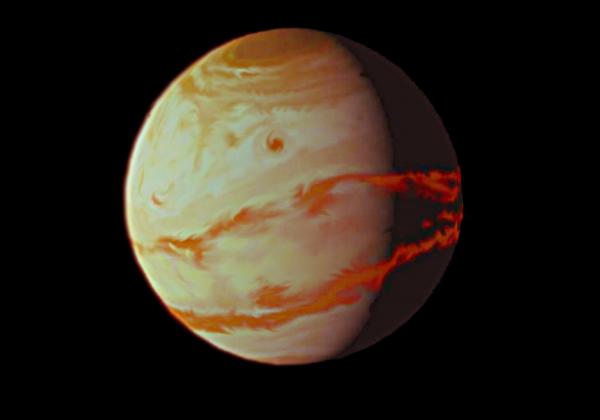BY LETTER
Hot Neptunes
Planets between 10 x Earth's mass and 0.2 x Jupiter's mass which orbit close enough to have a temperature of 800 Kelvin or more |
 Image from Steve Bowers |
Known as 'hot neptunes' since they have similar mass to the planet Neptune in the Old Solar System, which is in fact a cold cryomicrojovian world and quite different in nature.
Hot neptunes are a relatively numerous planetary type, and often are the result of inward planetary migration.
Classified as microjovians or subjovians by the NolWoCS scheme, these planets fall into two main temperature types;
- EpiStellar subtype, Hot, dark worlds with temperatures between 800 Kelvin and 1400 Kelvin; these fall in to the ancient Sudardsky classification as Class IV worlds, and are often characterised by an excess of alkali metals in the atmosphere.
- Hyperthermal subtype: Very hot worlds with temperatures above 1400 Kelvin (Sudarsky Class V worlds). These worlds are often bloated by heat expansion and may be losing atmospheric gases quite rapidly. They are distinguished by clouds of silicates and metals in the upper atmosphere, and considerable thermal emission from the dark side. Most hot neptunes of this kind are tidally locked.
Other hot neptunes have very small cores, and low gravity at the top of the atmosphere means that the rate of atmosphere loss may be quite high, leading to the development of a gaseous tail.
Over time a hot neptune may evolve into a chthonian world, with minimal atmosphere.
| Image from Steve Bowers |
Related Articles
Appears in Topics
Development Notes
Text by Steve Bowers
Initially published on 24 September 2011.
Initially published on 24 September 2011.






